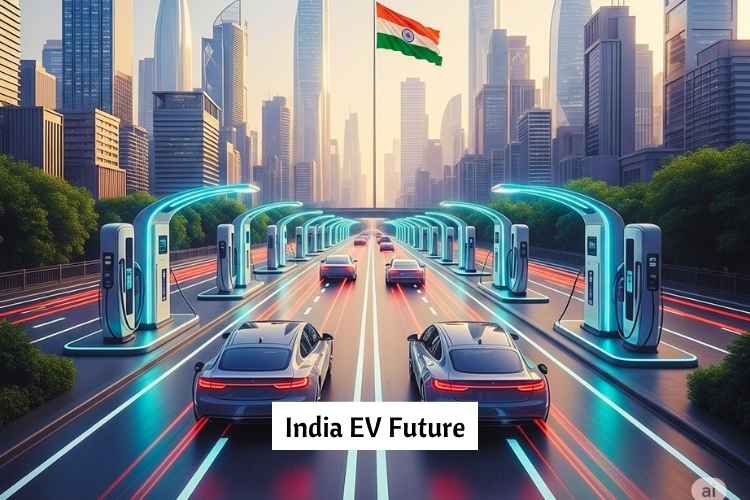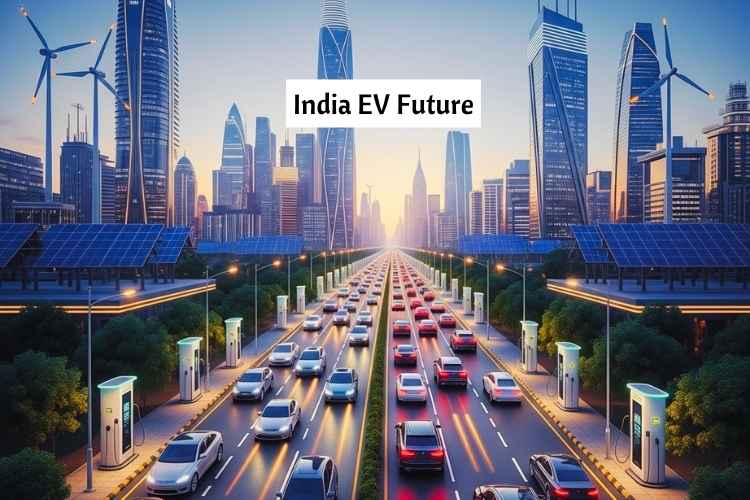India EV Future: India is racing toward a cleaner, greener future—and at the centre of this revolution is the electric vehicle (EV) industry. But this transformation has a powerful, often overlooked component: space. By 2030, India will need more than 6,000 acres of land to build the infrastructure supporting its EV dreams.

Table of Contents
The India EV Future Goal: A Quick Overview
India has set ambitious targets for EV adoption:
- 30% of private cars
- 70% of commercial vehicles
- 80% of two- and three-wheelers
- 40% of buses
…to be electric by 2030, as per the government’s vision.
But this shift isn’t just about replacing fuel tanks with batteries—it’s about building entire ecosystems: charging stations, battery swapping hubs, manufacturing plants, recycling units, and more.
And that’s where the 6,000 acres come in.
Why So Much Land? Breaking Down the Need

Let’s understand what that 6,000-acre estimate includes.
| Infrastructure Component | Land Requirement | Purpose |
|---|---|---|
| Charging Stations & Grids | ~2,000 acres | Public & highway charging needs |
| Battery Manufacturing & Gigafactories | ~1,500 acres | Producing EV batteries at scale |
| Battery Swapping & Storage Hubs | ~600 acres | For two- and three-wheelers |
| Recycling & Waste Management Units | ~300 acres | Sustainable disposal of old batteries |
| Vehicle Manufacturing & Assembly | ~1,200 acres | Expanding local EV production |
| R&D & Testing Facilities | ~400 acres | Ensuring safety, innovation, and standards |
The Land Challenge: Urban vs Rural Constraints
Finding 6,000 acres of usable land isn’t as simple as pointing on a map. India’s urban sprawl, zoning laws, and real estate prices make this a logistical puzzle.
Urban Bottlenecks
- In cities, where EV demand is highest, land is scarce and expensive.
- Setting up large charging stations or swapping hubs in metro areas involves lengthy permissions and high costs.
Rural Opportunities
- Tier-2 and Tier-3 cities, and even semi-rural areas, offer cheaper land.
- The government is pushing for EV cluster zones in such locations to balance demand and cost.
Conclusion on India EV Future
Electric vehicles promise a cleaner, quieter, and more sustainable future for India. But they can’t run on dreams alone. They need roads, wires, factories, and, above all, land.
The 6,000-acre challenge is not a stumbling block—it’s a building block. With the right vision and execution, India can unlock its EV future and become a global hub for electric mobility by 2030.
Bhakti Rawat is a Founder & Writer of InsureMyCar360.com. This site Provides You with Information Related To the Best Auto Insurance Updates & comparisons. 🔗
